NEETS Module 4 - Introduction to Electrical Conductors, Wiring
Techniques, and Schematic Reading
Pages i,
1-1,
1-11,
1-21,
2-1,
2-11,
2-21,
2-31,
2-41,
3-1,
3-11,
3-21, 4-1, 4-11, Index
| - |
Matter, Energy,
and Direct Current |
| - |
Alternating Current and Transformers |
| - |
Circuit Protection, Control, and Measurement |
| - |
Electrical Conductors, Wiring Techniques,
and Schematic Reading |
| - |
Generators and Motors |
| - |
Electronic Emission, Tubes, and Power Supplies |
| - |
Solid-State Devices and Power Supplies |
| - |
Amplifiers |
| - |
Wave-Generation and Wave-Shaping Circuits |
| - |
Wave Propagation, Transmission Lines, and
Antennas |
| - |
Microwave Principles |
| - |
Modulation Principles |
| - |
Introduction to Number Systems and Logic Circuits |
| - |
- Introduction to Microelectronics |
| - |
Principles of Synchros, Servos, and Gyros |
| - |
Introduction to Test Equipment |
| - |
Radio-Frequency Communications Principles |
| - |
Radar Principles |
| - |
The Technician's Handbook, Master Glossary |
| - |
Test Methods and Practices |
| - |
Introduction to Digital Computers |
| - |
Magnetic Recording |
| - |
Introduction to Fiber Optics |
| Note: Navy Electricity and Electronics Training
Series (NEETS) content is U.S. Navy property in the public domain. |
SELECTION of Wire SIZE
Several factors must be considered in selecting the size of wire to be used for
transmitting and distributing electric power. These factors will be discussed throughout
this section. Military specifications cover the installation of wiring in aircraft,
ships, and electrical/electronic equipment. These specifications describe the technical
requirements for material purchased from manufacturers by the Department of Defense.
An important reason for having these specifications is to ensure uniformity of sizes
to reduce the danger of fires caused by the improper selection of wire sizes. Wires
can carry only a limited amount of current safely. If the current flowing through
a wire exceeds the current-carrying capacity of the wire, excess heat is generated.
This heat may be great enough to burn off the insulation around the wire and start
a fire.
Factors GOVERNING The CURRENT RATING
The current rating of a cable or wire indicates the current capacity that the
wire or cable can safely carry continuously. If this limit, or current rating, is
exceeded for a length of time, the heat generated may burn the insulation. The current
rating of a wire is used to determine what size is needed for a given load, or current
drain.
The factors that determine the current rating of a wire are the conductor size,
the location of the wire in a circuit, the type of insulation, and the safe current
rating. Another factor that will be discussed later in this chapter is the material
the wire is made of. As you have already seen, these factors also affect the resistance
in ohms of a wire-carrying current.
CONDUCTOR SIZE
An increase in the diameter, or cross section, of a wire conductor decreases
its resistance and increases its capacity to carry current. An increase in the specific
resistance of a conductor increases its resistance and decreases its capacity to
carry current.
Wire LOCATION
The location of a wire in a circuit determines the temperature under which it
operates. a wire may be located in a conduit or laced with other wires in a cable.
Because it is confined, the wire operates at a higher temperature than if it were
open to the free air. The higher the temperature under which a wire is operating,
the greater will be its resistance. Its capacity to carry current is also lowered.
Note that, in each case, the resistance of a wire determines its current-carrying
capacity. The greater the resistance, the more power it dissipates in the form of
heat energy.
Conductors may also be installed in locations where the ambient (surrounding)
temperature is relatively high. When this is the case, the heat generated by external
sources is an important part of the total conductor heating. This heating factor
will be explained further when we discuss temperature coefficient. We must understand
how external heating influences how much current a conductor can carry. Each case
has its own specific limitations. The maximum allowable operating temperature of
insulated conductors is specified in tables. It varies with the type of conductor
insulation being used.
INSULATION
The insulation of a wire does not affect the resistance of the wire. Resistance
does, however, determine how much heat is needed to burn the insulation. As current
flows through an insulated conductor, the limit of current that the conductor can
withstand depends on how hot the conductor can get before it burns the insulation.
Different types of insulation will burn at different temperatures. Therefore, the
type of insulation used is the third factor that determines the current rating of
a conductor. For
instance, rubber insulation will begin deteriorating at relatively low temperatures,
whereas varnished cloth insulation retains its insulating properties at higher temperatures.
Other types of insulation are fluorinated ethylene propylene (FEP), silicone rubber,
or extruded polytetrafluoroethylene. They are effective at still higher temperatures.
SAFE CURRENT RATINGS
The National Board of Fire Underwriters prepares tables showing the safe current
ratings for sizes and types of conductors covered with various types of insulation.
The allowable current-carrying capacities of single copper conductors in free air
at a maximum room temperature of 30º C (86º F) are given in table 1-3. At ambient
temperatures greater than 30º C, these conductors would have less current- carrying
capacity.
Table 1-3. - Temperature Ratings and Current-Carrying Capacities (in Amperes)
of Some Single Copper Conductors at Ambient Temperatures of 30ºC
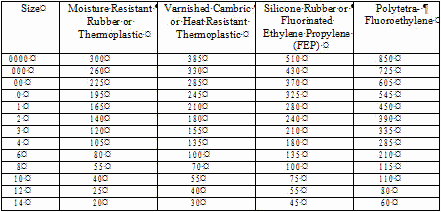
Q11. List the four factors you should use to select wire for
a specified current rating.
Q12. What are three types of nonmetallic insulating materials
that can be used in a high-temperature environments?
Q13. State why it is important for you to consider the ambient
(surrounding) temperature of a conductor when selecting wire size.
COPPER-VERSUS-ALUMINUM Conductors
Although silver is the best conductor, its cost limits its use to special circuits.
Silver is used where a substance with high conductivity or low resistivity is needed.
The two most commonly used conductors are copper and aluminum. Each has positive
and negative characteristics that affect its use under varying circumstances. a
comparison of some of the characteristics of copper and aluminum is given in table
1-4.
1-12
Table 1-4. - Comparative Characteristics of Copper and Aluminum

Copper has a higher conductivity than aluminum. It is more ductile (can be drawn
out). Copper has relatively high tensile strength (the greatest stress a substance
can bear along its length without tearing apart). It can also be easily soldered.
However, copper is more expensive and heavier than aluminum.
Although aluminum has only about 60 percent of the conductivity of copper, its
lightness makes long spans possible. Its relatively large diameter for a given conductivity
reduces corona. Corona is the discharge of electricity from the wire when it has
a high potential. The discharge is greater when smaller diameter wire is used than
when larger diameter wire is used. However, the relatively large size of aluminum
for a given conductance does not permit the economical use of an insulation covering.
Q14. State two advantages of using aluminum wire for carrying electricity
over long distances.
Q15. State four advantages of copper over aluminum as a conductor.
TEMPERATURE COEFFICIENT
The resistance of pure metals, such as silver, copper, and aluminum, increases
as the temperature increases. However, the resistance of some alloys, such as constantan
and manganin, changes very little as the temperature changes. Measuring instruments use these alloys because the resistance of the circuits must remain constant to
get accurate measurements.
In table 1-1, the resistance of a circular-mil-foot of wire (the specific resistance)
is given at a specific temperature, 20º C in this case. It is necessary to establish
a standard temperature. As we stated earlier, the resistance of pure metals increases
with an increase in temperature. Therefore, a true basis of comparison cannot be
made unless the resistances of all the substances being compared are measured at
the same temperature. The amount of increase in the resistance of a 1-ohm sample
of the conductor per degree rise in temperature above 0º C is called the temperature
coefficient of resistance. For copper, the value is approximately 0.00427 ohm.
A length of copper wire having a resistance of 50 ohms at an initial temperature
of 0º C will have an increase in resistance of 50 x 0.00427, or 0.214 ohms. This
applies to the entire length of wire and for each degree of temperature rise above
0º C. a 20º C increase in resistance is approximately 20 ´ 0.214, or
4.28 ohms. The total resistance at 20º C is 50 + 4.28, or 54.28 ohms.
Q16. Define the temperature coefficient of resistance.
Q17. What happens to the resistance of copper when it is heated?
CONDUCTOR INSULATION
To be useful and safe, electric current must be forced to flow only where it
is needed. It must be "channeled" from the power source to a useful load. In general,
current-carrying conductors must not be allowed to come in contact with one another,
their supporting hardware, or personnel working near them.
To accomplish this, conductors are coated or wrapped with various materials.
These materials have such a high resistance that they are, for all practical purposes,
nonconductors. Nonconductors are generally referred to as "insulators" or "insulating
material."
Only the necessary minimum amount of insulation is applied to any particular
type of conductor designed to do a particular job. This is done because of several
factors. The expense, stiffening effect, and a variety of physical and electrical
conditions under which the conductors are operated must be taken into account. Therefore,
there are a variety of insulated conductors available to meet the requirements of
any job.
Two fundamental properties of insulating materials (that is, rubber, glass, asbestos,
or plastic) are insulation resistance and dielectric strength. These are two entirely
different and distinct properties.
INSULATION Resistance
Insulation resistance is the resistance to current leakage through the insulation
materials. Insulation resistance can be measured with a megger without damaging
the insulation. Information so obtained is a useful guide in appraising the general
condition of insulation. Clean, dry insulation having cracks or other faults may
show a high value of insulation resistance but would not be suitable for use.
Dielectric STRENGTH
Dielectric strength is the ability of an insulator to withstand potential difference.
It is usually expressed in terms of the voltage at which the insulation fails because
of the electrostatic stress. Maximum dielectric strength values can be measured
only by raising the voltage of a Test SAMPLE until the insulation breaks down.
Q18. Compare the resistance of a conductor to that of an insulator.
Q19. State two fundamental properties of insulating materials.
Q20. Define insulation resistance.
Q21. Define dielectric strength.
Q22. How is the dielectric strength of an insulator determined?
TYPES of INSULATION
The insulating materials discussed in the next paragraphs are commonly used in
Navy electrical and electronic equipment.
Rubber
One of the most common types of insulation is rubber. The voltage that may be
applied to a rubber- covered conductor is dependent on the thickness and the quality
of the rubber covering. Other factors being equal, the thicker the insulation, the
higher may be the applied voltage. Rubber insulation is normally used for low- or
medium-range voltage. Figure 1-7 shows two types of rubber-covered wire. One is
a two-conductor cable in which each stranded conductor is covered with rubber insulation;
the other is a single, solid conductor. In each case, the rubber serves the same
purpose: to confine the current to its conductor.
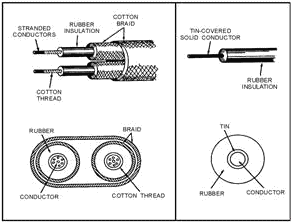
Figure 1-7. - Rubber insulation.
Referring to the enlarged cross-sectional view in figure 1-7, note that a thin
coating of tin separates the copper conductor from the rubber insulation. If the
thin coating of tin were not used, a chemical action would take place and the rubber
would become soft and gummy where it makes contact with the copper. When small,
solid, or stranded conductors are used, a winding of cotton threads is applied between
the conductors and the rubber insulation.
Code-GRADED RUBBER. - Code-graded rubber is the standard that
the National Electrical Code (NEC) has adopted as the minimum requirements for rubber
insulation as specified by Underwriters' Laboratories. In this code system, the
letter R indicates the use of a rubber insulator. Type R signifies that the wire
is rubber coated.
The NEC codes Type RH and Type RHH signify a rubber heat-resistant compound.
Type RW signifies a rubber moisture-resistant compound. a Type RHW signifies a rubber
heat- and moisture- resistant compound. Type RHW is approved for use in wet or dry
locations at a maximum conductor temperature of 75º C. Neoprene, a low-voltage compound,
is the one exception to Type RHW. Although not a rubber compound, neoprene meets
the requirements of Underwriters' Laboratories and was designated Type RHW.
LATEX RUBBER. - Latex rubber is a high-grade compound consisting
of 90 percent unmilled grainless rubber. There are two designations for this type
of insulation: Type RUH and Type RUW. Type RUH (rubber unmilled heat-resistant)
is used in dry locations when the conductor temperature does not exceed 75º C. Type
RUW (rubber unmilled moisture-resistant) is used in wet locations when the conductor
does not exceed 60º C.
SILICONE. - Silicone is a rubber compound that does not carry
the "R" designator for many of its applications. An example of this is Type SA (silicone-asbestos).
In Type SA, the insulator around the conductor is silicone rubber, but the outer
covering must consist of heavy glass, asbestos-glass, or asbestos braiding treated
with a heat, flame, and moisture-resistant compound.
Q23. What is the purpose of coating a copper conductor with
tin when rubber insulation is used?
Plastics
Plastic is one of the more commonly used types of insulating material for electrical
conductors. It has good insulating, flexibility, and moisture-resistant qualities.
Although there are many types of plastic insulating materials, thermoplastic is
one of the most common. With the use of thermoplastic, the conductor temperature
can be higher than with some other types of insulating materials without damage
to the insulating quality of the material. Plastic insulation is normally used for
low- or medium-range voltage.
The designators used with thermoplastics are much like those used with rubber
insulators. The following letters are used when dealing with NEC type designators
for thermoplastics:
......................................................
Letter
Designates
T
Thermoplastic
H
Heat-resistant
W
Moisture-resistant
A
Asbestos
N
Outer nylon jacket
M
Oil-resistant
For example, a NEC designator of Type THWN would indicate thermoplastic heat-
and moisture- resistant with an outer nylon jacket.
Varnished Cambric
Varnished cambric insulation can withstand much higher temperatures than rubber
insulation. Varnished cambric is cotton cloth that has been coated with an insulating
varnish. Figure 1-8 shows a cable covered with varnished cambric insulation. The
varnished cambric is in tape form and is wound around the conductor in layers. An
oily compound is applied between each layer of the tape to prevent water from seeping
through the insulation. It also acts as a lubricant between the layers of tape,
so they will slide over each other when the cable is bent.

Figure 1-8. - Varnished cambric insulation.
Cambric insulation is used on extremely high-voltage conductors used in substations
and powerhouses. It is also used in other locations subjected to high temperatures.
In addition, it is used on the coils and leads of high-voltage generators. Transformer
leads also use this insulation because it is unaffected by oils or grease and has
high dielectric strength. Varnished cambric and paper insulation for cables are
the two types of insulating materials most widely used at voltages above 15,000
volts. Such cable is always lead covered to keep out moisture.
Extruded Polytetrafluoroethylene
Extruded polytetrafluoroethylene is a high-temperature insulation used extensively
in aircraft and equipment installations. It will not burn, but will vaporize when
subjected to intense heat. Conductors for high temperatures use a nickel coating
rather than tin or silver to prevent oxidation. Nickel-coated wire is more difficult
to solder, but makes satisfactory connections with proper soldering techniques.
Warning
Avoid breathing the vapors from extruded polytetrafluoroethylene insulation
when it is heated. Symptoms of overexposure are dizziness or headaches. These symptoms
disappear upon exposure to fresh air.
Q24. What safety precaution should you take when working with
extruded polytetrafluoroethylene insulated wiring?
Fluorinated Ethylene Propylene (FEP)
FEP has properties similar to extruded polytetrafluoroethylene, but will melt
at soldering temperatures. It is rated at 200º C and is, therefore, considered a
high-temperature insulation. There are no known toxic vapors from FEP. Common-sense
practice, however, requires that you provide adequate ventilation during any soldering
operation.
Asbestos
Asbestos insulation was used extensively in the past for high-temperature insulation.
Today, it is seldom used by the Navy. Many naval ships and aircraft, however, still
contain asbestos-insulated wiring. Aboard ship, this is particularly true in galley
and laundry equipment. The reason for discontinuing the use of asbestos as an insulator
is that breathing asbestos fibers can produce severe lung damage. It can render
you disabled or cause fatal fibrosis of the lungs. Asbestos is also a factor in
the development of cancer in the gastrointestinal tract. Safety precautions concerning
asbestos will be covered in more detail at the end of chapter 3.
Warning
Avoid inhalation of asbestos fibers. Asbestos fibers have been found
to cause severe lung damage (asbestosis) and cancer of the gastrointestinal tract.
Follow Navy safety precautions when working with all asbestos products.
One type of asbestos-covered wire is shown in figure 1-9. It consists of stranded
copper conductors covered with felted asbestos. The wire is, in turn, covered with
asbestos braid. This type of wire is used in motion-picture projectors, arc lamps,
spotlights, heating element leads, and so forth.
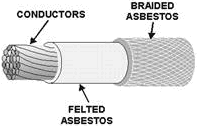
Figure 1-9. - Asbestos Insulation.
Another type of asbestos-covered cable is shown in figure 1-10. It is combination
of asbestos and varnished cambric. This type of insulation serves as leads for motors
and transformers that sometimes must operate in hot, damp locations. The varnished
cambric covers the inner layer of felted asbestos. This prevents moisture from reaching
the innermost layer of asbestos. Asbestos loses its insulating properties when it
becomes wet. It will, in fact, become a conductor. Varnished cambric prevents this
from happening because it resists moisture. Although this insulation will withstand
some moisture, it should not be used on conductors that may at times be partially
immersed in water. Under those circumstances, the insulation must be protected with
an outer lead sheath.
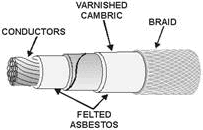
Figure 1-10. - Asbestos and varnished cambric insulation.
The NEC has designators for eight types of asbestos wire. The designators and
a description of each
are listed below.
Type A Nonimpregnated asbestos without an asbestos
braid
Type AA Nonimpregnated asbestos with an outer asbestos braid
or glass
Type AI Impregnated asbestos without an asbestos braid
Type AIA Impregnated asbestos with an outer asbestos braid
or glass
Type AVA Asbestos, varnish-cambric insulation with an outer asbestos
braid or glass
Type AVL Asbestos, varnish-cambric insulation with an outer asbestos
braid covered with a lead sheath
Type AVB Asbestos, varnish-cambric insulation with an outer
flame-retardant cotton braid
Type SA Silicone rubber insulated with outer heavy glass,
asbestos-glass, or asbestos braid
Q25. State the reasons that the Navy is getting away from the use of asbestos insulation.
Q26. State what happens to the insulating characteristics of asbestos when
it gets wet.
Paper
Paper has little insulation value alone. However, when impregnated with a high
grade of mineral oil, it serves as a satisfactory insulation for extremely high-voltage
cables. The oil has a high dielectric strength, and tends to prevent breakdown of
the paper insulation. The paper must be thoroughly saturated with the oil. The thin
paper tape is wrapped in many layers around the conductors, and then soaked with
oil.
The three-conductor cable shown in figure 1-11 consists of paper insulation on
each conductor. It has a spirally wrapped nonmagnetic metallic tape over the insulation.
The space between conductors is filled with a suitable spacer to round out the cable.
Another nonmagnetic metal tape is used to secure the entire cable. Over this, a
lead sheath is applied. This type of cable is used on voltages from 10,000 volts
to
35,000 volts.
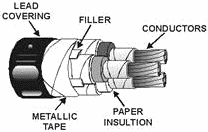
Figure 1-11. - Paper-insulated power cables.
Q27. What are the most common insulators used for extremely
high voltages?
Silk and Cotton
In certain types of circuits (for example, communications circuits), a large
number of conductors are needed, perhaps as many as several hundred. Figure 1-12
shows a cable containing many conductors. Each is insulated from the others by silk
and cotton thread. Because the insulation in this type of cable is not subjected
to high voltage, the use of thin layers of silk and cotton is satisfactory.
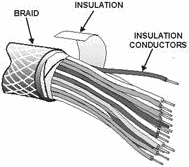
Figure 1-12. - Silk and cotton Insulation.
Silk and cotton insulation keeps the size of the cable small enough to be handled
easily. The silk and cotton threads are wrapped around the individual conductors
in reverse directions. The covering is then impregnated with a special wax compound.
Enamel
The wire used on the coils of meters, relays, small transformers, motor windings,
and so forth, is called magnet wire. This wire is insulated with an enamel coating.
The enamel is a synthetic compound of cellulose acetate (wood pulp and magnesium).
In the manufacturing process, the bare wire is passed through a solution of hot
enamel and then cooled. This process is repeated until the wire acquires from 6
to 10 coatings. Thickness for thickness, enamel has higher dielectric strength than
rubber. It is not practical for large wires because of the expense and because the
insulation is readily fractured when large wires are bent.
Figure 1-13 shows an enamel-coated wire. Enamel is the thinnest insulating coating
that can be applied to wires. Hence, enamel-insulated magnet wire makes smaller
coils. Enameled wire is sometimes covered with one or more layers of cotton to protect
the enamel from nicks, cuts, or abrasions.
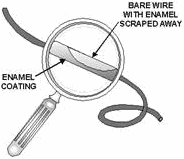
Figure 1-13. - Enamel Insulation.
Q28. What is the common name for enamel-insulated wire?
Mineral Insulated
Mineral-insulated (MI) cable was developed to meet the needs of a noncombustible,
high heat- resistant, and water-resistant cable. MI cable has from one to seven
electrical conductors. These conductors are insulated in a highly compressed mineral,
normally magnesium oxide, and sealed in a liquidtight, gastight metallic tube, normally
made of seamless copper (figure 1-14).
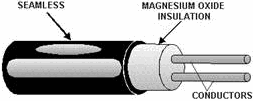
Figure 1-14. - Two-conductor mineral-insulated (MI) cable.
CONDUCTOR PROTECTION
Wires and cables are generally subject to abuse. The type and amount of abuse
depends on how and where they are installed and the manner in which they are used.
Cables buried directly in the ground must resist moisture, chemical action, and
abrasion. Wires installed in buildings must be protected against mechanical injury
and overloading. Wires strung on crossarms on poles must be kept far enough apart
so that the wires do not touch. Snow, ice, and strong winds make it necessary to use conductors having high tensile strength and substantial frame structures.
|


















